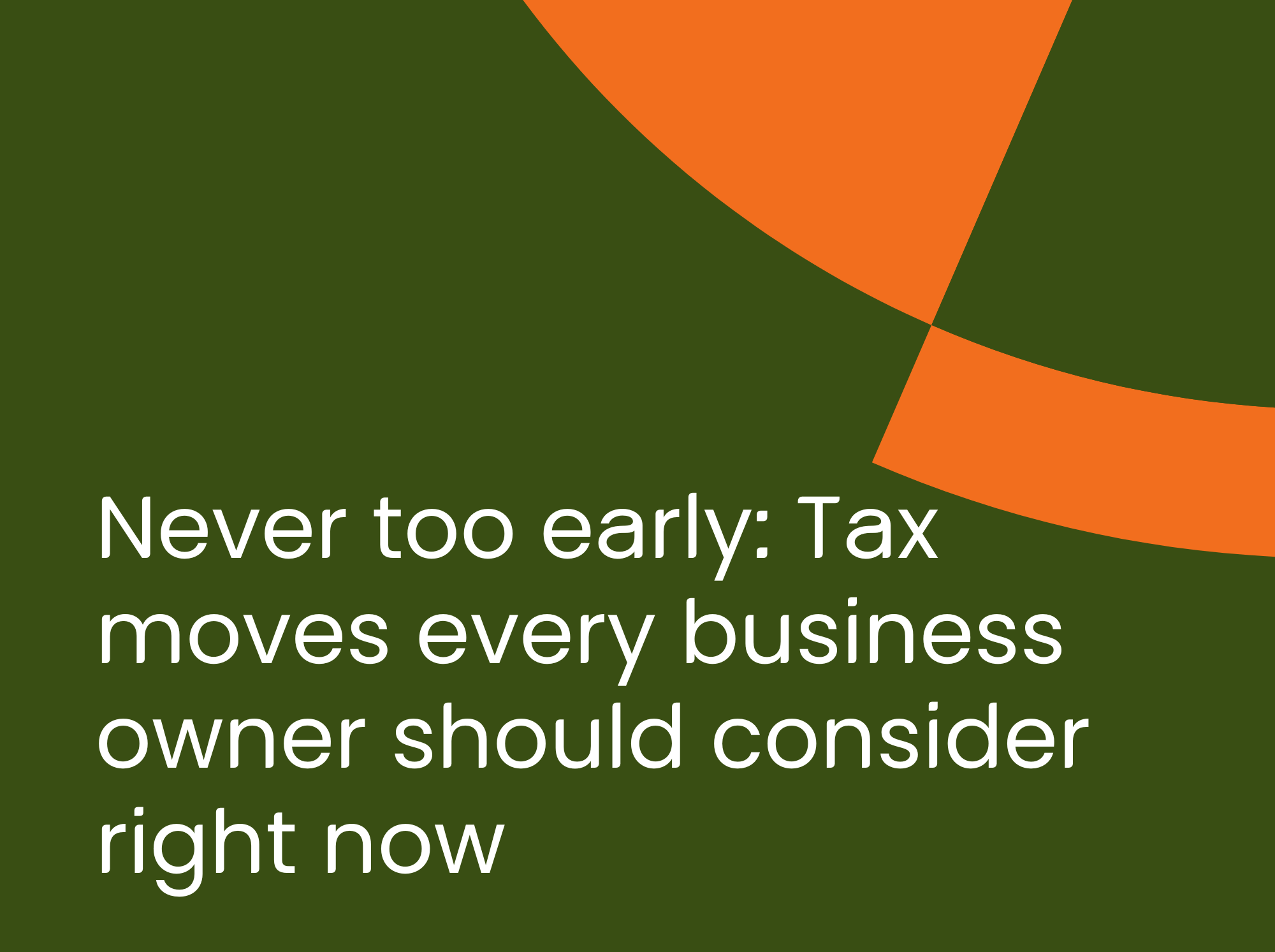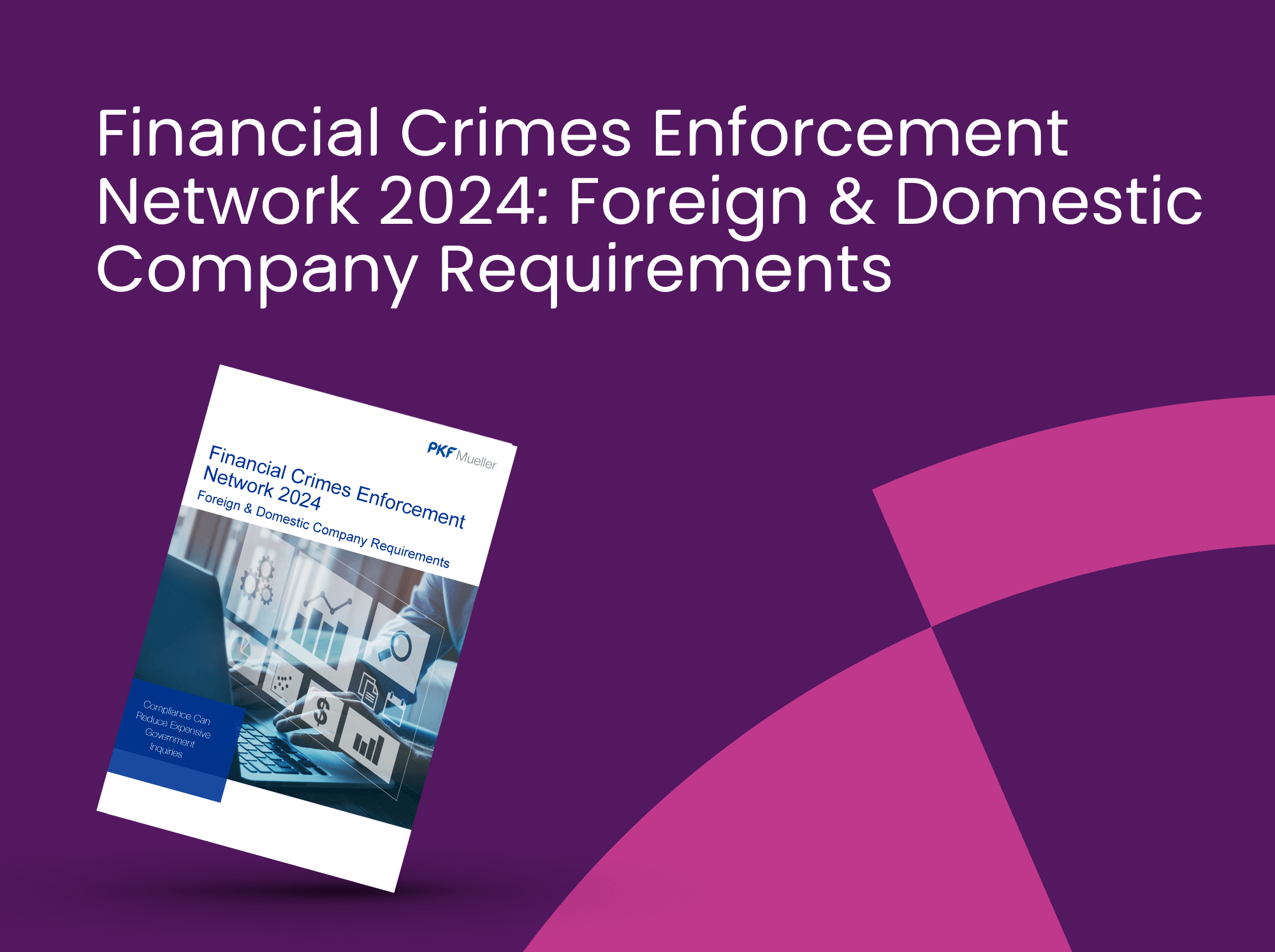The $1.7 trillion omnibus spending bill (funding for Federal fiscal year ending September 30, 2023) signed into law on December 29, 2022, included the Setting Every Community Up for Retirement Enhancement 2.0 Act of 2022 (SECURE 2.0 or the Act). SECURE 2.0 significantly changed options for retirement savings and retirement plan rules.
The following items include a substantial percentage of the 2022 and 2023 SECURE 2.0 changes. Many SECURE 2.0 changes occur in later years and are not discussed in this article, but some new retirement laws are explained in the Significant 2024 and 2025 Retirement Changes article.
- SMALL EMPLOYER PENSION PLAN CREDITS AND TECHNICAL FIXES FOR MULTIEMPLOYER PLANS
- NEW CREDIT WHEN MILITARY SPOUSES PARTICIPATE IN DEFINED CONTRIBUTION PLANS
- SMALL IMMEDIATE FINANCIAL INCENTIVES FOR CONTRIBUTING TO A PLAN
- TAX TREATMENT OF CERTAIN NONTRADE OR BUSINESS SEP CONTRIBUTIONS
- STATUTE OF LIMITATIONS ON EXCISE TAX ASSESSMENT FOR INDIVIDUAL RETIREMENT PLANS EXCESS CONTRIBUTIONS
- DEDUCTIONS FOR QUALIFIED CONSERVATION CONTRIBUTIONS ARE LIMITED FOR PASS-THROUGH ENTITIES
- EXTENSION OF TELEHEALTH EXEMPTION FOR HIGH DEDUCTIBLE HEALTH PLANS THROUGH 2024
- REQUIRED MINIMUM DISTRIBUTION AGE INCREASE, PENALTY REDUCTION, BIRTH OR ADOPTION DISTRIBUTION
- RETROACTIVE FIRST YEAR ELECTIVE DEFERRALS FOR SOLE PROPRIETORS
- OPTIONAL TREATMENT OF EMPLOYER MATCHING OR NONELECTIVE CONTRIBUTIONS AS ROTH CONTRIBUTIONS
- ONE-TIME ELECTION FOR QUALIFIED CHARITABLE DISTRIBUTION TO SPLIT-INTEREST ENTITY
- DISTRIBUTION TO FIREFIGHTERS
- TAX TREATMENT OF IRA INVOLVED IN A PROHIBITED TRANSACTION
- NO PENALTY ON EARLY DISTRIBUTIONS FOR INDIVIDUALS WITH TERMINAL ILLNESS
- REPEAL OF DIRECT PAYMENT REQUIREMENT ON EXCLUSION FROM GROSS INCOME
- MODIFICATION OF ELIGIBLE AGE FOR EXEMPTION FROM EARLY WITHDRAWAL PENALTY
- NO WITHDRAWAL PENALTY FOR CERTAIN STATE AND LOCAL GOVERNMENT CORRECTIONS EMPLOYEES
- RULES FOR RETIREMENT FUND USE IN CONNECTION WITH QUALIFIED FEDERALLY DECLARED DISASTERS
- SIMPLE AND SEP ROTH IRAS
SMALL EMPLOYER PENSION PLAN CREDITS AND TECHNICAL FIXES FOR MULTIEMPLOYER PLANS
The Act changes the small employer pension plan (SEP) start-up cost credit by (i) providing that the credit is equal to the entire amount of creditable costs (qualified start-up costs) of an employer with 50 or fewer employees (up to an annual cap), (ii) allowing a credit amount for employer contributions to small employer pensions, and (iii) fixing a technical glitch pertaining to small employers who join multiemployer plans (MEP).
Increased credit for start-up costs
The Act increases the small employer pension plan start-up cost credit from 50% to 100% of qualified start-up costs for employers with up to fifty employees. Employers with 51 to 100 employees will continue to be eligible for a small employer pension credit of 50% of qualified start-up costs. In either case, an annual cap based on the number of employees, with a maximum of $5,000, applies (unchanged from existing law). The small employer pension credit is available for the first three tax years of the plan’s existence.
Credit for employer contributions
The Act also provides a credit amount for all or a portion of employer contributions to small employer pensions for the first five employer tax years beginning with the one year that includes the plan’s start date. Specifically, the amount of the small employer pension credit allowed is increased by the applicable percentage of employer contributions on behalf of employees, up to a per-employee cap of $1,000. The applicable percentage is 100% in the first and second tax years, 75% in the third year, 50% in the fourth year, and 25% in the fifth year. No credit is available in the sixth and subsequent years.
The applicable percentage is based on the date the plan was established, not when employees begin to participate in the plan.
The amount of the credit allowed for employer contributions is reduced for employers with 51 to 100 employees (inclusive). The reduction is equal to 2% multiplied by the number of employees that are in excess of fifty, multiplied by the amount of the credit.
No credit is allowed for employer contributions if the employer has more than one hundred employees.
In addition, no credit is allowed for employer contributions on behalf of an employee who makes more than $100,000. The $100,000 figure is adjusted for inflation (in multiples of $5,000, rounding down) in tax years beginning after 2023.
The credit amount for employer contributions is not available either for elective deferrals under Code Section 402(g)(3) or for contributions to a defined benefit plan under Code Section 414(j).
Both of the above credits apply to tax years beginning after December 31, 2022.
Multiemployer plan credit
Under prior law, the SEP credit had been available for only the first three years the MEP itself was in existence. For example, if the MEP had been in existence for one year when the employer joined, the employer would only get to claim the SEP credit for two years. If the MEP had been in existence for three or more years, the employer would get no credit. The Act fixes this technical glitch by allowing employers joining a multiple employer plan (which includes pooled employer plans) to take the portion of the SEP credit for qualified start-up costs for the first three years after they join an MEP, regardless of how long the MEP has been in existence.
The MEP rule is effective retroactively for tax years beginning after December 31, 2019.
Businesses that joined a preexisting MEP in 2020 or later should contact us so we can determine whether to file amended returns to claim the small employer pension credit for any creditable start-up costs that were barred under prior law.
Compliance problems with one entity does not hurt another entity
This section allows Code Section 403(b) plans, which are generally sponsored by charities, educational institutions, and non-profits, to participate in MEPs and PEPs, including relief from the one bad apple rule so that the violations of one employer do not affect the tax treatment of employees of compliant employers.
This section is effective for plan years beginning after December 31, 2022.
NEW CREDIT WHEN MILITARY SPOUSES PARTICIPATE IN DEFINED CONTRIBUTION PLANS
The Act adds a new tax credit for small employers, those with no more than one hundred employees, that earned at least $5,000 for the preceding year. The credit is for each military spouse that starts participating in an eligible defined contribution plan of the employer. Highly compensated employees (under Code Section 414(q)) are excluded from credit consideration.
The annual credit amount is (1) $200 for each military spouse who participates in the employer’s plan, plus (2) the amount of related employer contributions to the plan (capped at $300 of contributions for any individual). The Act provides safeguards for eligibility, and for employer contribution entitlement, that plans must satisfy to qualify for the credit.
The credit is available for tax years starting in 2023.
SMALL IMMEDIATE FINANCIAL INCENTIVES FOR CONTRIBUTING TO A PLAN
Under current law, employers may provide matching contributions as a long-term incentive for employees to contribute to a Code Section 401(k) plan. However, immediate financial incentives (like gift cards in small amounts) are prohibited even though they may especially motivate individuals to join their employers’ retirement plans. This section enables employers to offer de minimis financial incentives, not paid for with plan assets, such as low-dollar gift cards, to boost employee participation in workplace retirement plans by exempting de minimis financial incentives from Code Section 401(k)(4)(A) and from the corresponding rule under Code Section 403(b).
This section is effective for plan years beginning after December 29, 2022.
TAX TREATMENT OF CERTAIN NONTRADE OR BUSINESS SEP CONTRIBUTIONS
This section permits employers of domestic employees (e.g., nannies) to provide retirement benefits for such employees under a Simplified Employee Pension (“SEP”).
This section is effective for tax years beginning after December 29, 2022.
STATUTE OF LIMITATIONS ON EXCISE TAX ASSESSMENT FOR INDIVIDUAL RETIREMENT PLANS EXCESS CONTRIBUTIONS
The Act provides that the statute of limitations for the assessment of excise taxes due to excess contributions to tax-favored accounts and accumulations on qualified retirement plans begins to run on the filing of the taxpayer’s income tax return for the year of the violation. The limitations period is three years (six years in the case of excess contributions).
Therefore, the filing of the Form 5329 excise tax return by the private foundation, plan, trust, or other organization administering the plan would no longer be required to start the statute of limitations.
If an individual is not required to file an income tax return for that year, the statute of limitations would nevertheless begin on the date the return would have been due.
This section is effective December 29, 2022.
DEDUCTIONS FOR QUALIFIED CONSERVATION CONTRIBUTIONS ARE LIMITED FOR PASS-THROUGH ENTITIES
A charitable deduction is not allowed (exceptions exist) for an otherwise qualified conservation contribution (conservation easement) that is made by a passthrough entity if the amount of the contribution exceeds 2.5 times the sum of each partner/member’s basis in the contributing entity. This provision applies to contributions made after December 29, 2022.
EXTENSION OF TELEHEALTH EXEMPTION FOR HIGH DEDUCTIBLE HEALTH PLANS THROUGH 2024
Health savings accounts (HSAs) are tax-favored IRA-type trust or custodial accounts that can be contributed to by, or on behalf of, eligible individuals to pay for certain medical expenses on a tax-favored basis. Under Code Section 223, tax-advantaged contributions generally cannot be made to an HSA unless the account holder is covered by a qualifying high-deductible health plan (HDHP) and does not have disqualifying non-HDHP coverage. To facilitate the use of telehealth during the COVID pandemic, the CARES Act provided that coverage for telehealth and other remote care services would be considered disregarded coverage-i.e., coverage that may be provided before the HDHP minimum deductible is satisfied without causing a loss of HSA eligibility-for plan years beginning on or before December 31, 2021. The Consolidated Appropriations Act, 2022 restored the telehealth exceptions for months beginning after March 31, 2022, and before January 1, 2023.
The Act amends Code Section 223(c)(2)(E) to provide that the exception for telehealth and other remote care services applies to plan years beginning after December 31, 2022, and before January 1, 2025 (in addition to the time periods described above).
This provision is effective for plan years beginning after December 31, 2022.
REQUIRED MINIMUM DISTRIBUTION AGE INCREASE, PENALTY REDUCTION, BIRTH OR ADOPTION DISTRIBUTION
The Act increases the age for required minimum distribution (RMD) from 72 to 73, beginning on January 1, 2023.
Effective in 2023, the penalty for failure to take the RMD is reduced from its current 50% to 25%, with a reduction to 10% penalty if the RMD is timely corrected. Further reductions of the penalty are available in certain situations.
Effective December 29, 2022, earnings attributable to excess contributions to an IRA that are returned by the due date of the tax return (including extensions) are exempt from the 10% early withdrawal tax that would have applied before the Act. The exemption applies to the imposition of taxes, interest, and penalties on December 29, 2022, or later, regardless of whether the situation occurred before December 29, 2022.
For distributions made after December 29, 2022, participants have three years to repay withdrawals for qualified birth or adoption expenses.
RETROACTIVE FIRST YEAR ELECTIVE DEFERRALS FOR SOLE PROPRIETORS
If an employer adopts a qualified plan after the close of a tax year, but before the time prescribed by law for filing the employer’s tax return for the tax year (including extensions thereof), the employer may elect to treat the plan as having been adopted as of the last day of the tax year. That rule allows employers to establish and fund a qualified plan by the due date for filing the employer’s return for the preceding plan year. However, that rule does not override other rules requiring certain plan provisions to be in effect during a plan year, such as the provision for elective deferrals under a 401(k) plan.
A 401(k) plan of a sole proprietor can be funded with employer contributions as of the due date for the business’s return, but the elective deferrals must be made as of December 31 of the prior year. However, an individual is deemed to have made a contribution to an IRA for a tax year if it is contributed after the tax year has ended but is made “on account of” that year, and before the due date for filing the IRA owner’s tax return for that year without extensions (generally, April 15).
The provision provides that in the case of an individual who owns the entire interest in an unincorporated trade or business, and who is the only employee of that trade or business, any elective deferral under a 401(k) plan which is made by that individual before the time for filing the individual’s return for the tax year (determined without regard to any extensions) ending after or with the end of the plan’s first plan year, will be treated as having been made before the end of the plan’s first plan year. Under the provision, 401(k) plans sponsored by sole proprietors can receive employee contributions up to the date of the employer’s tax return filing date, but only for the first plan year in which the plan is established.
The provision is effective for plan years beginning after December 29, 2022.
OPTIONAL TREATMENT OF EMPLOYER MATCHING OR NONELECTIVE CONTRIBUTIONS AS ROTH CONTRIBUTIONS
A 401(a) qualified plan, a 401(k), a 403(b) plan, or a governmental 457(b) plan may permit a participant to designate some or all matching contributions and nonelective contributions as designated Roth contributions. This applies only to the extent that a participant is fully vested in these contributions.
This provision applies to contributions made after December 29, 2022.
ONE-TIME ELECTION FOR QUALIFIED CHARITABLE DISTRIBUTION TO SPLIT-INTEREST ENTITY
This section expands the IRA charitable distribution provision to allow for a one-time, $50,000 distribution to charities through charitable gift annuities, charitable remainder unitrusts, and charitable remainder annuity trusts. This section also indexes for inflation the annual IRA charitable distribution limit of $100,000.
The one-time rule is effective for distributions made in tax years beginning after the date of enactment of the Act. The indexing provision is effective for distributions made in tax years ending after December 29, 2022.
DISTRIBUTION TO FIREFIGHTERS
Under current law, if an employee terminates employment after age 55 and takes a distribution from a retirement plan, the 10% early distribution tax does not apply. However, there is a special rule for “qualified public safety employees” in governmental plans, under which age 50 is substituted for age 55 for purposes of this exception from the 10% tax. This exemption applies to public sector firefighters, but not private sector firefighters.
This section extends the age 50 rule to private sector firefighters.
This section is effective for distributions made after December 29, 2022.
TAX TREATMENT OF IRA INVOLVED IN A PROHIBITED TRANSACTION
When an individual engages in a prohibited transaction with respect to their IRA, the IRA is disqualified and treated as distributed to the individual, irrespective of the size of the prohibited transaction. This section clarifies that if an individual has multiple IRAs, only the IRA with respect to which the prohibited transaction occurred will be disqualified.
This section is effective for tax years beginning after December 29, 2022.
NO PENALTY ON EARLY DISTRIBUTIONS FOR INDIVIDUALS WITH TERMINAL ILLNESS
Under current law, an additional 10% tax applies to early distributions from tax-preferred retirement accounts. This section provides an exception to the tax in the case of a distribution to a terminally ill individual.
This section is effective for distributions made after December 29, 2022.
REPEAL OF DIRECT PAYMENT REQUIREMENT ON EXCLUSION FROM GROSS INCOME
Current law provides an exclusion from gross income ($3,000) for a distribution from a governmental retirement plan to a public safety officer to pay for their health insurance premiums. The exclusion requires that the plan directly pay the insurance premiums. This section repeals the direct payment requirement.
This section is effective for distributions made after December 29, 2022.
MODIFICATION OF ELIGIBLE AGE FOR EXEMPTION FROM EARLY WITHDRAWAL PENALTY
The 10% additional tax on early distributions from tax-preferred retirement savings plans does not apply to a distribution from a governmental plan to a public safety officer who is at least age fifty. This section extends the exception to public safety officers with at least twenty-five years of service with the employer sponsoring the plan.
This section is effective for distributions made after December 29, 2022.
NO WITHDRAWAL PENALTY FOR CERTAIN STATE AND LOCAL GOVERNMENT CORRECTIONS EMPLOYEES
This section extends the public safety officer exception to the 10% early distribution tax to corrections officers who are employees of state and local governments.
This section is effective for distributions made after December 29, 2022.
RULES FOR RETIREMENT FUND USE IN CONNECTION WITH QUALIFIED FEDERALLY DECLARED DISASTERS
This section provides permanent rules relating to the use of retirement funds in the case of a federally declared disaster. The permanent rules allow up to $22,000 to be distributed from employer retirement plans or IRAs for affected individuals. Such distributions are not subject to the 10% additional tax and are taken into account as gross income over three years. Distributions can be repaid to a tax preferred retirement account. Additionally, amounts distributed prior to the disaster to purchase a home can be recontributed, and an employer is permitted to provide for a larger amount to be borrowed from a plan by affected individuals and for additional time for repayment of plan loans owed by affected individuals. The limit on disaster-related 401(k) plan loans is increased to the lesser of $100,000 or 100% of a participant’s vested balance.
This section is effective for disasters occurring on or after January 26, 2021.
SIMPLE AND SEP ROTH IRAS
Generally, all plans that allow pre-tax employee contributions are permitted to accept Roth contributions with one exception–SIMPLE IRAs. 401(k), 403(b), and governmental 457(b) plans are allowed to accept Roth employee contributions.
This section allows SIMPLE IRAs to accept Roth contributions too. In addition, aside from grandfathered salaried reduction simplified employee pension plans, under current law, simplified employee pension plans (“SEPs”) can only accept employer money and not on a Roth basis. This section allows employers to offer employees the ability to treat employee and employer SEP contributions as Roth (in whole or in part).
This section is effective for tax years beginning after December 31, 2022.
Plan for retirement by also reading: Significant 2024 Retirement Changes
PKF Mueller can help you plan today for your retirement. Contact Your PKF Mueller representative or:

Kelly Jordan, CPA, JURISPRUDENCE IN INTERNATIONAL TAX LAW, MBA, MBA, CFS, CITA, CTPS
Tax Director
kjordan@pkfmueller.com
+1 847 350 1504

Audra Conforti, CPA
Tax Director
+1 847 649 8821
aconforti@pkfmueller.com

Tim Owens, CPA
Tax Director
+1 708 745 3532
towens@pkfmueller.com



